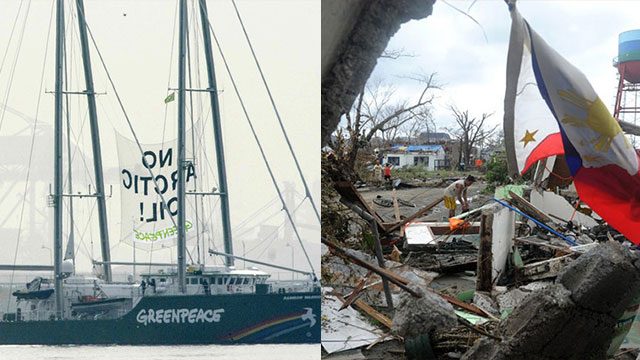SUMMARY
This is AI generated summarization, which may have errors. For context, always refer to the full article.
 I was born over 5,000 miles from the North Pole. And yet, as I have grown older I have come to realize that my future and the future of my country is inextricably tied to the fate of the Arctic.
I was born over 5,000 miles from the North Pole. And yet, as I have grown older I have come to realize that my future and the future of my country is inextricably tied to the fate of the Arctic.
When I spoke out at the United Nations (UN) talks in Warsaw last November 2013 to demand immediate and drastic action in the wake of Typhoon Yolanda (Haiyan), I did not expect to become a YouTube hit. I had just spoken with my brother who was at home, and who had been helping to recover the bodies of the victims.
Typhoon Haiyan was the deadliest typhoon in the history of the Philippines, with over 6,200 people dead, 1.9 million homeless and more than 6 million displaced. Words cannot describe the horror and suffering that has been endured.
The science is clear that climate change could mean more frequent and more intense typhoons. Even if we cannot attribute Typhoon Haiyan directly to climate change, my country refuses to accept a future where super typhoons become a regular occurrence.
We cannot possibly continue down a road that commits our children and our children’s children to environmental disasters on this heart-breaking scale. (READ: Southern Ocean winds strongest in 1,000 years: study)
In the wake of the Typhoon Haiyan, 750,000 signed a petition to stand in solidarity with Philippines. That global expression of support touched me at a time of great personal grief, and in that dark moment offered a ray of renewed hope.
A story in the north
So why am I, a climate negotiator from the Philippines, looking north? The reason is that the Arctic remains at the very center of the unfolding story of a man-made climate crisis, and of our response to it. The seven summers with the lowest minimum sea ice extents have all occurred in the last seven years. It is an extraordinary tale with consequences that reach far beyond the Arctic Circle.

This is a story of epic proportions, set in a stunning icy landscape, with a complex and fascinating geography. The sea ice reflects the sun’s energy, while frozen permafrost keeps methane locked underground, and the Greenland ice sheet stores water that when melted would cause dangerous sea level rises. Increased warming could stop and reverse all of these vital functions. In other words, what happens in the Arctic does not stay in the Arctic. (READ: West Antarctic ice sheet collapse unstoppable’: NASA)
It is also a story with a twist of tragic irony – as the ice cap shrinks the oil companies are moving in hoping to reap profit from the oil reserves that are only now accessible because of the melt.
As I take stock of the damage caused by Haiyan, and resolve to head to yet another round of UN climate negotiations, I can hardly believe that there are some companies who would undermine all our efforts by heading north to find and drill for new fossil fuels.
Global oil demand that would justify, on economic terms, exploitation of Arctic oil reserves would have a catastrophic impact on the climate, leading to global average temperature increases of over 6 degrees C.
Those oil and gas companies seeking to drill in the Arctic are showing total disregard for efforts of preventing dangerous climate change.
The Arctic Declaration
It is for this reason that I have signed the International Declaration on the Future of the Arctic, which calls on the international community not only to re-double its efforts to tackle climate change, but also to work with the Arctic states to take steps to safeguard the polar environment.
The declaration is a charter for Arctic protection. For me the most compelling reason to sign was simple. There can be no rational international response to climate change that permits the expansion of oil drilling into the newly melted areas of the Arctic.
The people of the Arctic and the sovereign states of the region have a huge privilege and responsibility.
As custodians of an incredible landscape and eco-system they are among the first to bear witness to the impacts of climate change. The melting glaciers and the shrinking sea ice must rank as some of the most dramatic environmental changes in human history.
However, this story is far from finished. Indeed the next chapter is as yet unwritten.
Will we take this moment to take stock of our past and our future? Will we protect the Arctic for generations to come, or will we allow the Arctic Ocean to be polluted and exploited for yet more fossil fuels?
In our response to the Arctic crisis we will be judged by posterity. – Rappler.com
Yeb Saño is chief UN climate negotiator for the Philippines. He collaborates with Greenpeace in saving the Arctic from oil drilling.
Add a comment
How does this make you feel?
There are no comments yet. Add your comment to start the conversation.